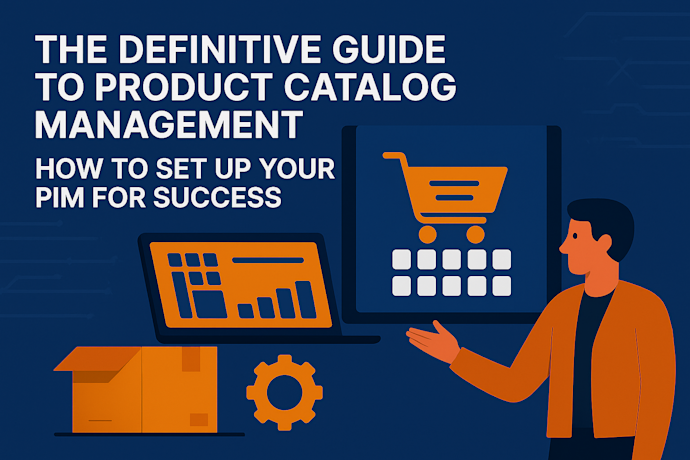
A Product Information Management (PIM) system is a software solution that helps companies create, store, manage, and easily access large amounts of product-specific information.
Why Your Business Needs a PIM System to Improve Product Data and Sales
Consumer product and retail industries lose $40 billion or 3.5% of their sales every year due to supply-chain inefficiencies, most of which can be fixed by integrating a PIM system.
Supply Chain Losses and the Case for PIM
A PIM functions as a Single Source of Truth (SSoT) for the company. This means that everyone in the company, whether they’re in marketing & sales or product manufacturing & distribution can easily access up-to-date and valid product information on all SKUs.
Different types of data that can be stored within the PIM such as:
● Technical data: Product specifications such as sizing, ingredients, components, etc.
● Usage data: Descriptions about where and how-to-use the product
● Product data: Metadata, rich product stories, and descriptions
● Media files: PDFs, images, videos, animations, etc.
How does a PIM function?
A product information management system is a centralized internal database that lets companies add, edit, and delete product-specific information. Most PIMs can be easily integrated into ERPs (Enterprise Resource Planning systems), supplier and distributor portals, eCommerce channels, CRMs, Business Intelligence platforms, and other programs. A PIM built with an open API is intuitive and automated, without affecting the readability or writability of the product data.
Why do you need a PIM system?
There are several benefits to introducing a PIM system but here are five of them to get you started:
- Multi-channel marketing
With a PIM system in place, your product information can be easily shared across different digital and physical channels such as websites, mobile apps, print catalogues, brochures, etc. If your company uses an ecommerce platform like Amazon or eBay, the process of sharing product information with customers via cross-channel marketing becomes faster when you use a PIM to store and structure your data.
2. Steamline your internal processes
It's time to say goodbye to countless excel sheets and adopt a PIM. This will facilitate both intra-and-inter-departmental processes when it comes to managing product data, and this, in turn, leads to a shorter time-to-market. PIMs encourages agile working — multiple departments can simultaneously work on updating their department-specific product information, thus, reducing the time taken from development to release.
3. Consistent product data
When different departments have different points of contacts and multiple channel-specific excel spreadsheets full of product data, things tend to get a bit messy. A centralized system like PIMCore ensures that your core product information on a website reads the same as the product information in a print catalogue.
Inconsistent data can also affect SEO — this means your products may not show up if users search for relevant terms that don’t appear in your product description. PIM systems also ensure that your product data is easily adapted to different types of channels for maximum visibility and sales.
4. Fewer errors
With a centralized product information system, fewer errors make their way onto customer-facing portals like websites or sales presentations.
When you upgrade to a PIM, knowing that the data you’re working with is valid and up-to-date reduces the possibility of citing incorrect prices or promising out-of-stock products.
5. Enriched Product Data
The benefit of a great product information management system is that it lets you share more than just the key descriptors — from richly woven product stories to interactive images and videos, you can entice the customer and distinguish your offerings from your competitors.
A product information management system can save a tremendous amount of time, effort, and energy. In fact, companies spend 25 minutes updating old product information on each SKU every year, which amounts to several hundred hours lost. This time could instead be used to develop stronger customer relationships and higher sales volumes. PIMs allow you to control your data and release high-quality, consistent information across omnichannel marketing, resulting in cohesive user experience journeys.


